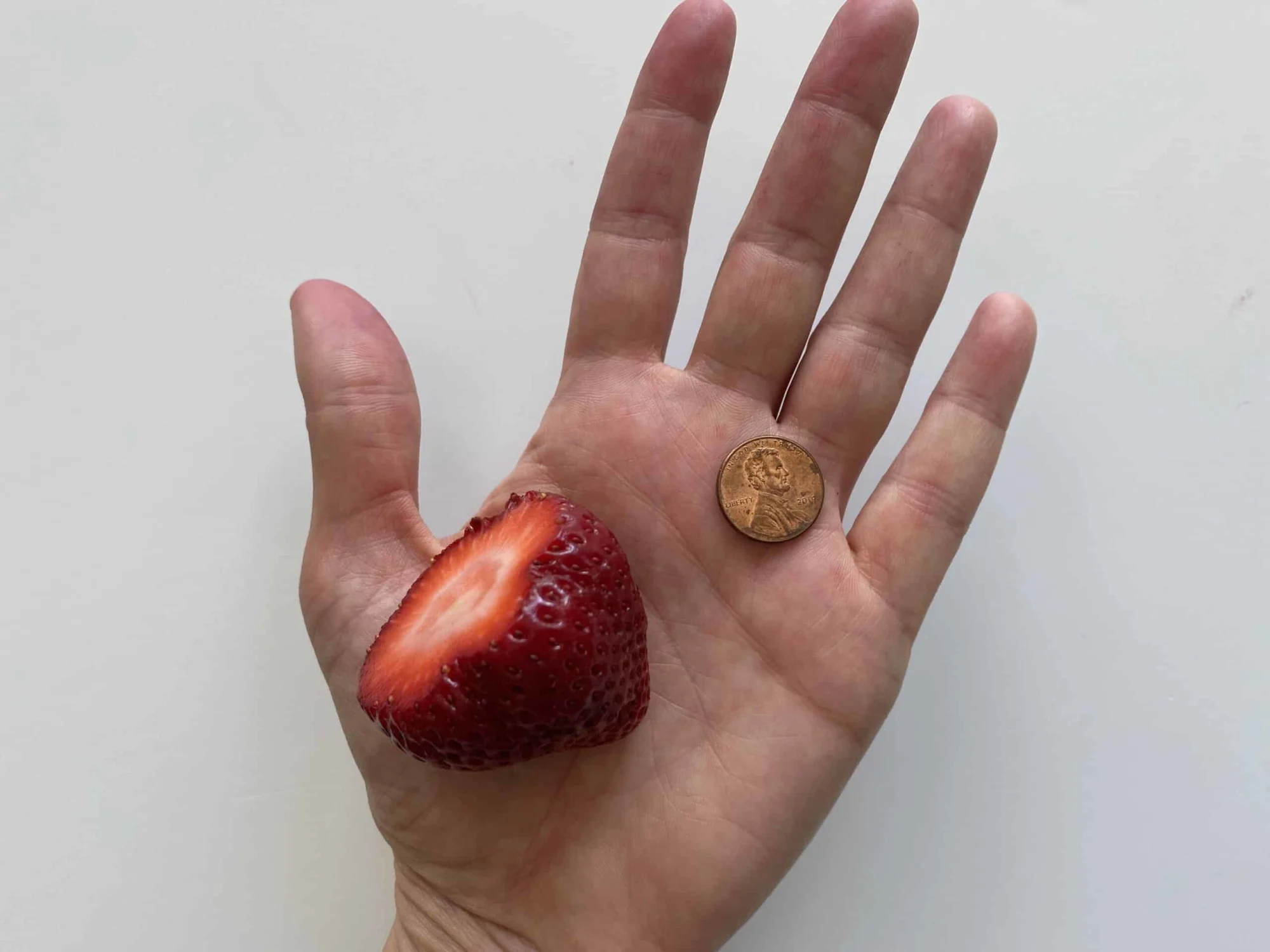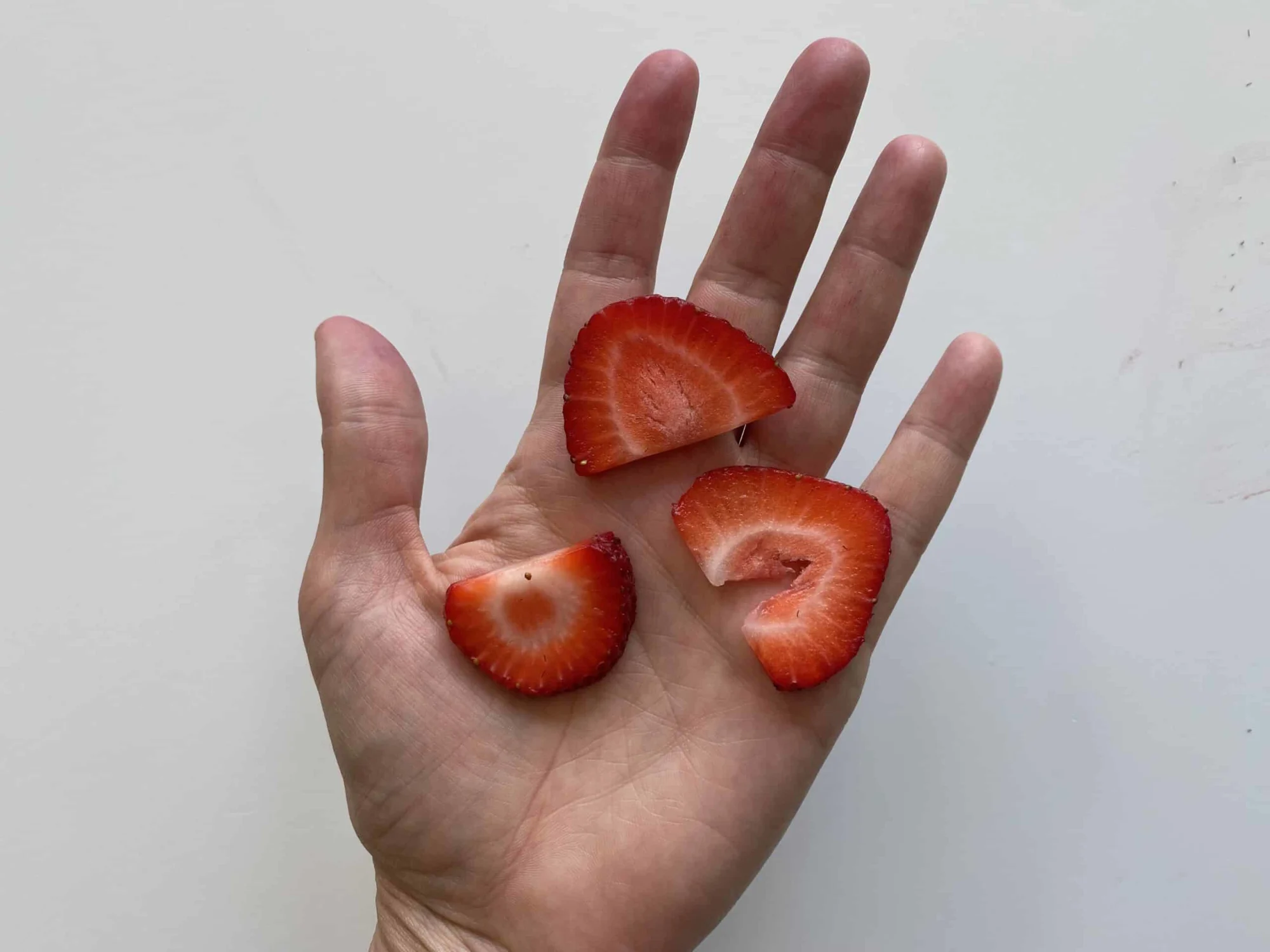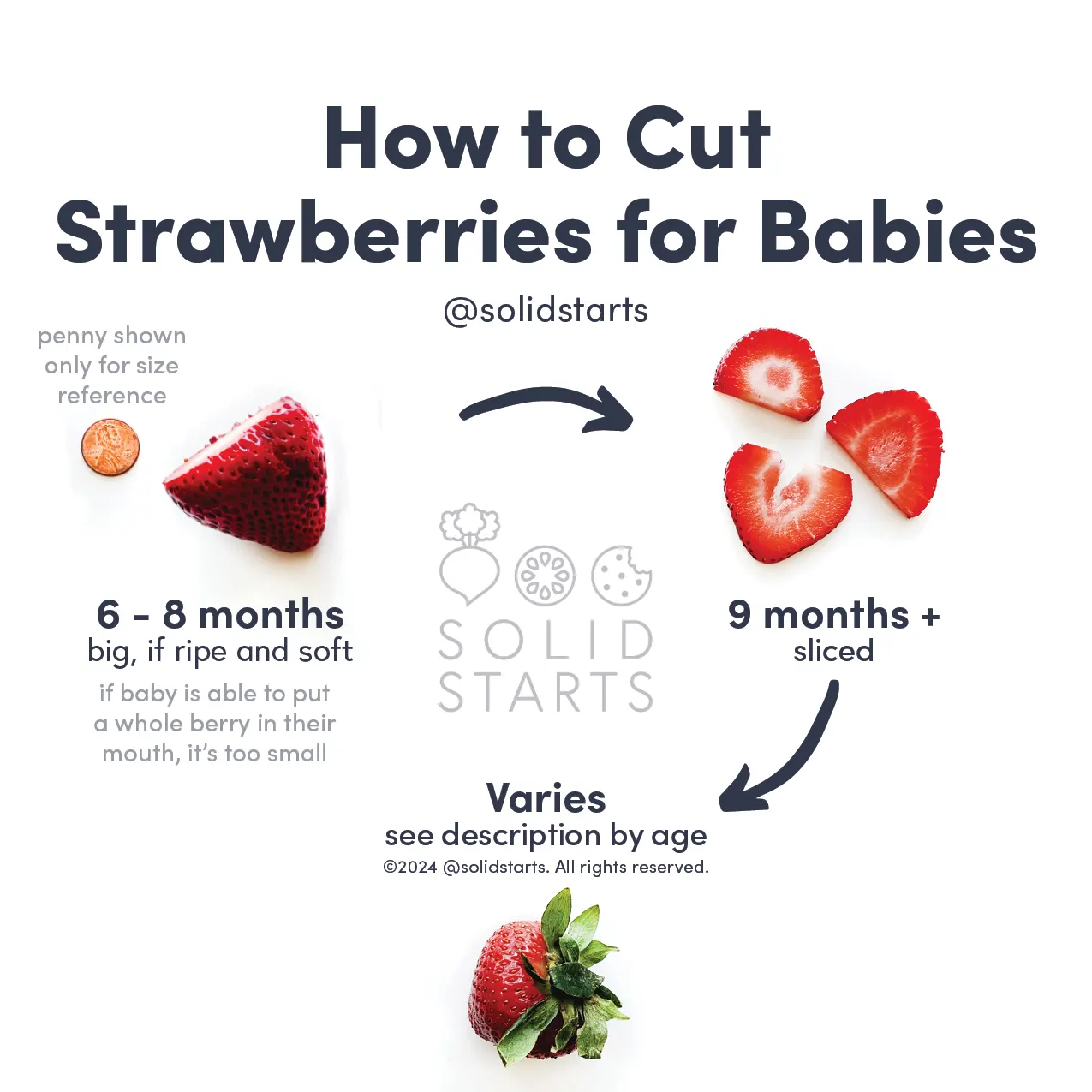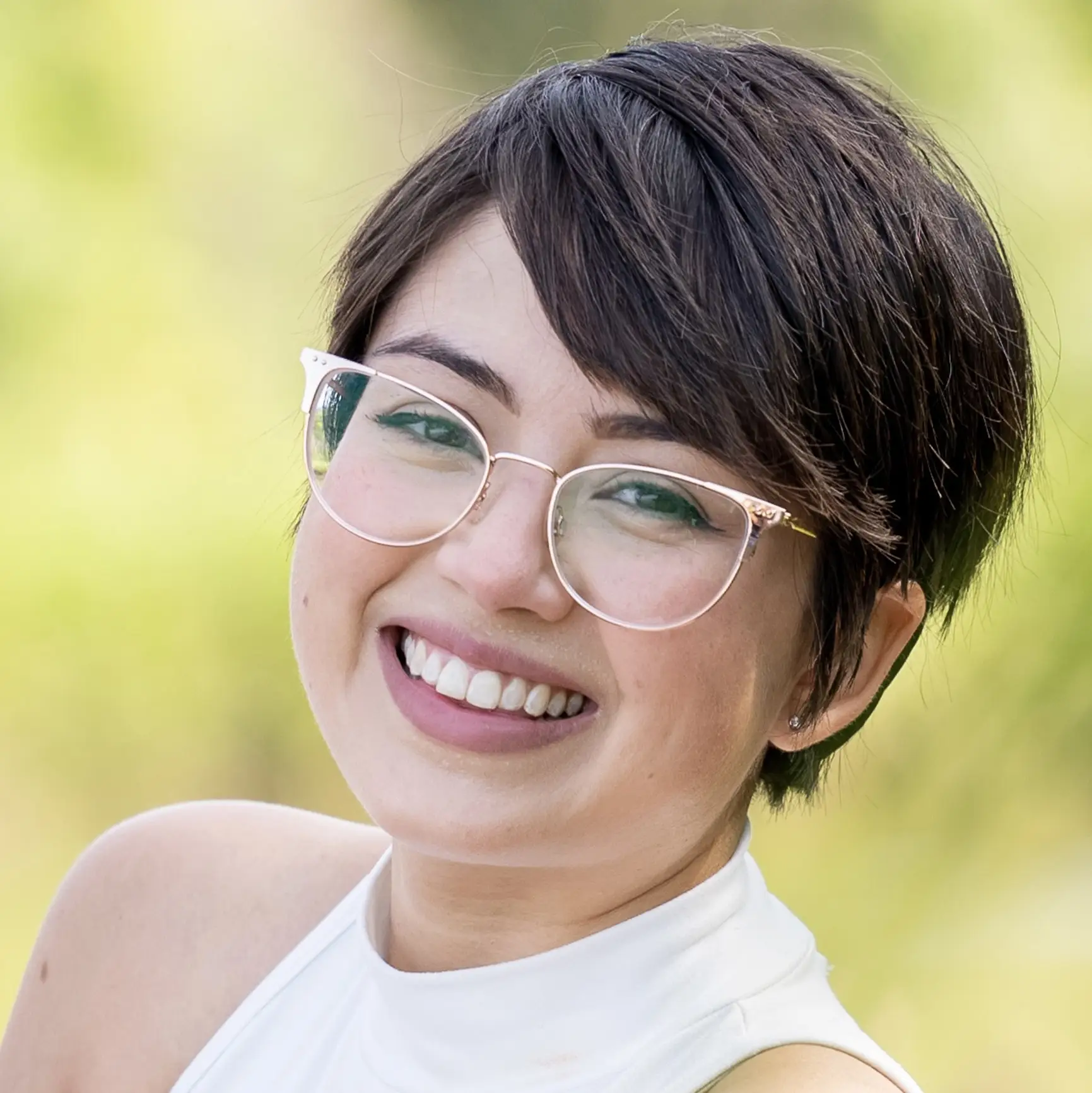Strawberry
Fruit
Age Suggestion
6 months
Iron-Rich
No
Common Allergen
No

When can babies have strawberries?
Strawberries may be introduced as soon as a baby is ready for solids, which is generally around 6 months of age. Note that strawberries range in size and not all strawberries will be appropriate for babies, so read our How to Serve section closely.
Strawberries grow in temperate regions worldwide, and humans have been harvesting wild strawberries and learning to cultivate the fruit for centuries. There are tons of varieties to try – some the size of your fingernail, others the size of your hand; some red or pink, others purple or white; some deliciously sweet, others tart like pineapple. From the delicate Alpine strawberry to the hefty Fragaria Chandler, there are many varieties to explore.
Are strawberries healthy for babies?
Yes. Strawberries are packed with vitamin C, which strengthens immunity and helps baby’s body absorb iron from plant-based foods. The fruit also contains fiber, which promotes a healthy gut, as well as folate that fuels a baby’s metabolism, cell energy, and antioxidant activity. The seeds even contain some omega-3 fatty acids to power a baby’s vision, nervous system, and brain development. The best part about strawberries: the fruit contains more than 50 polyphenols, which are plant compounds that act as antioxidants and anti-inflammatory agents to keep a baby’s cells and whole body healthy.
★Tip: Love strawberry jam? It would be wise to hold off on serving jam until after the 2nd birthday because it is packed with added sugar. Instead, simply mash strawberries to make a fresh jam that can be stirred into oatmeal or yogurt, thickened with chia seeds, or served on its own.
Are strawberries a common allergen?
No. Strawberry is not considered to be a common allergen, although allergenic proteins in the strawberry fruit have been identified. Interestingly, the strawberry proteins that cause allergic reactions are less likely to be found in white strawberries. What’s more common than allergy is a harmless skin reaction around the mouth from the acidity of the fruit. Although not an allergic reaction, strawberries and other acidic fruits can also cause or worsen diaper rash when consumed in excess. If this occurs, apply a thick barrier cream or ointment to the diaper area and limit prolonged contact with a wet/dirty diaper.
Individuals with Oral Allergy Syndrome (also known as pollen food allergy syndrome), particularly those who are allergic to birch pollen, may be sensitive to strawberries. Oral Allergy Syndrome typically causes mild, temporary itching, tingling, or burning in the mouth, which usually resolves on its own. Cooking the fruit can minimize the reaction.
Strawberry is a part of the Rosaceae family, and individuals who are sensitive to other plants in this family (such as almonds, apples, and plums) may have a similar experience with strawberries.
As you would when introducing any new food, start by offering a small quantity at first. If there is no adverse reaction, gradually increase the amount served over future meals.
Are strawberries a choking hazard for babies?
Yes. Strawberries are a potential choking hazard, especially when the fruit is firm, round, or small. To reduce the risk, choose very large, soft, and ripe berries, and prepare and serve them in an age-appropriate way. As always, make sure to create a safe eating environment and stay within arm's reach of baby at mealtime. For more information on choking, visit our sections on gagging and choking and familiarize yourself with the list of common choking hazards.
Videos
Why are strawberries sometimes very tart and other times very sweet?
The flavor depends on the variety of strawberry – some types are more acidic, while others are sweeter. The flavor also depends on how the fruit was grown and harvested.
How do you serve strawberries to babies?
Every baby develops on their own timeline, and the suggestions on how to cut or prepare particular foods are generalizations for a broad audience.
6 to 8 months old:
If your strawberries are very big and very soft and ripe, you can offer a whole strawberry (stem removed) if you feel comfortable. While not necessary, you can cut off the strawberry’s tip to reduce the choking risk a bit further. If the whole berry is able to fit into the child's mouth, it is too small and should be sliced or mashed. To check if the berry is soft enough, press it between your fingers and make sure it gives under slight pressure. If you have to press hard for it to give, it is too firm. Similarly, if the berry gets munched down to a size that makes you uncomfortable, remove the berry and replace with a new, large berry. If your strawberries are small, mash or slice the fruit before serving. To help baby consume more mashed strawberries, stir the fruit into yogurt or warm cereal.
9 months old +:
At this age, you can start offering thin slices of strawberry. Note that paper-thin slices will likely be difficult for babies to pick up and may stick to baby’s tongue or the roof of their mouth.
12 months old +:
Continue with sliced strawberries, and when you feel the toddler is ready, move back up in size and offer large whole or quartered strawberries. The more ripe and soft the berry, the lower the risk of choking.


How to serve strawberries to babies by age
Our Team
Written by
Expert Tips Delivered to Your Inbox
Sign up for weekly tips, recipes and more!
Copyright © 2024 • Solid Starts Inc









